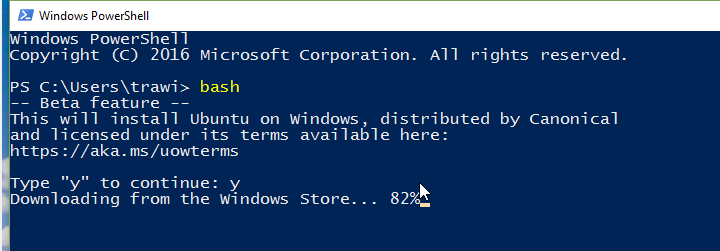
I had a chance to play with the Ubuntu userspace support in Windows 10 recently. I started with Windows Insider Preview build 14295 from MSDN, enabled the “Fast Ring” for Windows Insider updates, and then updated to build 14316 and activated the subsystem. After rebooting, running bash from PowerShell installed the Ubuntu base image.
The first use case was building the APR 1.6.x tree from svn and running the test suite. The build was uneventful and most testcases pass. From looking only at the test suite output, it seems that Sys V semaphores and the FREEBIND socket option aren’t implemented, epoll isn’t close enough to Linux, sendfile isn’t close enough to Linux, and perhaps something about file locking isn’t close enough. That’s not so bad all in all. I think the next steps here are to identify some particular discrepancy from Linux, report it, and see if they bite. Separately, setting some ac_cv_FOO variables might be close to enough to get the testcases to run completely (e.g., use poll() instead of epoll(), use a different default proc mutex, etc.).
The second use case was trying out a Python+Django+PostgreSQL project, checking if it is usable and test suites for some projects I work on pass. (Such code “should” work fine on native Windows given enough time to mess around with installing different server software, getting native Python extensions to compile, etc. Yuck.) Unfortunately, the lack of SysV IPC breaks PostgreSQL setup. (See this GitHub issue for the PostgreSQL failure and this suggestion for supporting SysV IPC.)
So what is the point of WSL, for me at least?
- Garbage collect the last 3 or so ways to get Unix-y stuff running on Windows and make the installation and update effort for such tools largely disappear (apt-get). (I.e., greatly improve the theoretical best-of-both-worlds development setup.)
- Improve some use cases for the occasional savvy Windows-bound consumer of <dayjob>, which would require being able to install a Django application using the same Ubuntu and Python packages and the same setup instructions as on Ubuntu, in order to run management commands and maybe occasionally use the dev server for testing very simple changes.
- Have something new for me to yell at OS X users with broken tools who have been ignoring my pleas to install an Ubuntu VM.
References